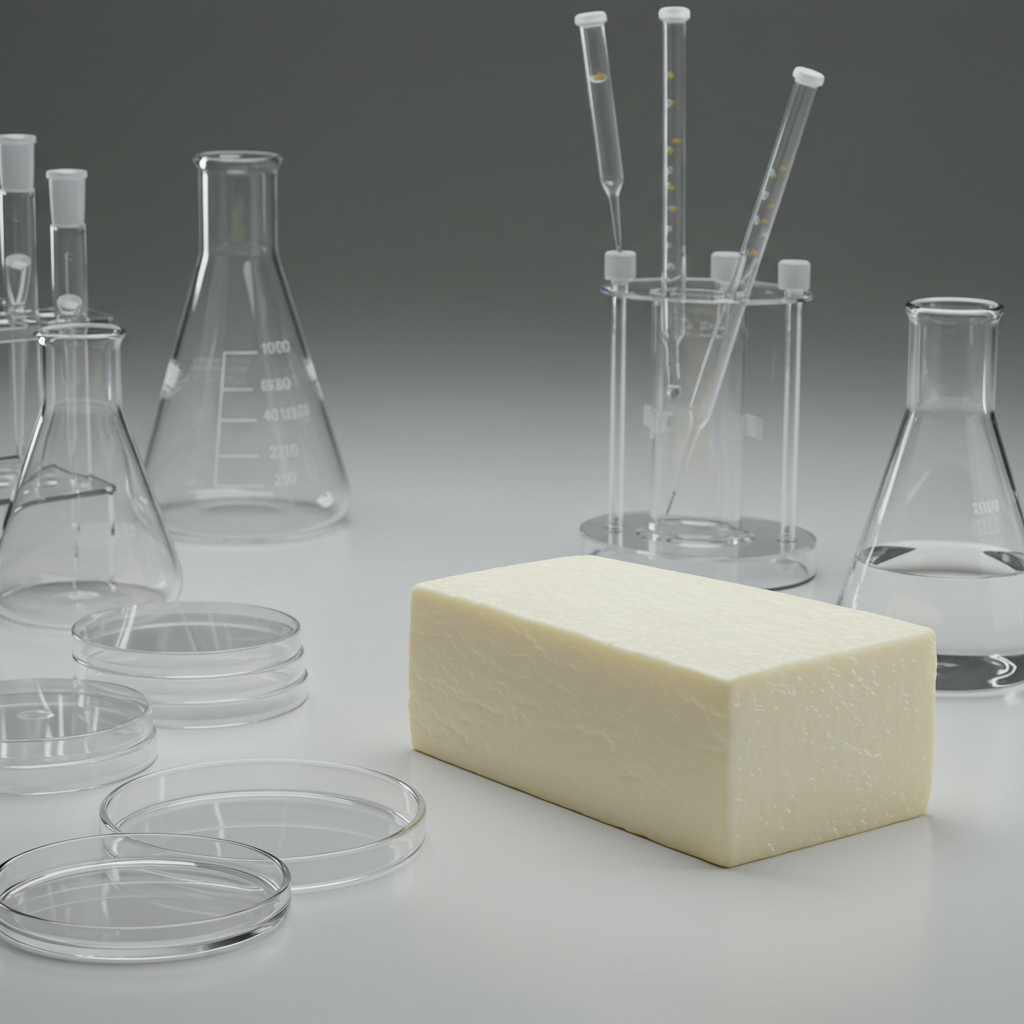Imagine cheese that delivers the familiar taste and texture you love, yet is made without a single cow. This isn’t science fiction; it’s the promise of lab-grown, or precision fermented, cheese. Food technologists are pioneering methods to create dairy proteins using microbial fermentation, bypassing traditional animal agriculture entirely. Several innovative companies worldwide are racing to bring these novel cheese alternatives to market in the coming years, potentially transforming our dinner tables and addressing significant environmental and ethical concerns associated with conventional dairy.
While the prospect is exciting for some, these products face considerable hurdles. The market for existing plant-based cheese has seen recent challenges. Consumer acceptance, regulatory pathways, production costs, and perhaps most importantly, replicating the complex sensory experience of real cheese are major factors determining whether these efforts will succeed. This exploration delves into the science behind udder-free cheese, the market realities it confronts, and whether consumers are ready to embrace this innovative food technology.
What Exactly Is Precision Fermented Cheese?
At its heart, precision fermented cheese relies on microorganisms, not mammals. The process starts with genetically engineered yeast, bacteria, or fungi. These microbes are modified to produce casein, the primary protein found in milk that gives cheese its structure, melt, and stretch. Think of it like using microbes to produce insulin, a well-established biotechnological process.
Companies cultivate these specialized microbes in fermentation tanks, where they effectively ‘brew’ casein protein. Once the desired amount of protein is harvested, it’s combined with plant-based fats and other necessary components typically found in milk, such as minerals and sugars. This reconstructed ‘milk’ base then undergoes traditional cheese-making processes – adding cultures, enzymes, coagulating, shaping, and aging. The goal is to mimic the molecular composition of animal milk as closely as possible to achieve the desired cheesy outcome. This approach differs from many current plant-based cheeses which rely on fats and starches to simulate texture but often lack the complex protein structure of dairy. This next generation of alternative protein is part of a broader wave of food innovation exploring novel sustainable sources and methods, such as those developing protein from sea squirts.
Pioneers in the Udder-Free Revolution
Several startups are at the forefront of this burgeoning industry. Better Dairy, based in London, UK, is one such company focusing on precision fermentation. They aim to replicate the familiar taste and function of dairy cheeses, particularly hard varieties like cheddar, where they see the biggest quality gap with existing vegan options.
In the Netherlands, Those Vegan Cowboys is also developing precision-fermented cheeses. They are targeting specific applications where consumers might be less particular about the cheese type, such as toppings for frozen pizzas. This pragmatic approach aims for a “silent revolution” by replacing hidden ingredients first. French firm Standing Ovation is another key player, working on versatile casein proteins capable of producing a wide range of cheeses, including soft varieties like camembert. These companies are charting pathways for regulatory approval, anticipating launches first in the US, followed by Europe and the UK, where novel foods often face longer assessment periods.
Beyond the Udder: Why Develop Precision Fermented Cheese?
The drive behind creating dairy without cows is multifaceted. Sustainability is a major factor. Conventional dairy farming requires vast amounts of land, water, and feed, contributing significantly to greenhouse gas emissions and environmental degradation. Precision fermentation offers the potential to produce dairy proteins with a smaller ecological footprint.
Animal welfare is another key motivation. This technology completely eliminates the need for animal involvement in milk production, addressing ethical concerns for consumers worried about the conditions in industrial farming operations, which some describe as morally challenging.
Furthermore, these lab-grown cheeses could offer potential health benefits. Since they start with protein and engineered fats, they can be formulated to be lactose-free, cholesterol-free, and potentially lower in saturated fats compared to some traditional cheeses. This provides options for individuals with dietary restrictions or health goals. The primary goal for developers, however, remains replicating the desirable taste, melt, and texture of dairy cheese, which has proven challenging for many current plant-based alternatives.
Facing the Market Melt: Challenges and Realities
Despite the technological promise, lab-grown cheese enters a complex market. Data from the Agriculture and Horticulture Development Board (AHDB) indicates a recent downturn for existing plant-based cheese sales in the UK, with a significant decline observed in early 2025, while traditional cow’s cheese sales grew. This suggests the current market for non-dairy cheese faces headwinds.
Several factors contribute to this challenging landscape. The vegan population in Britain is relatively small, hovering between 1% and 3%, far fewer than dairy consumers. This limits the immediate core market. Price is another barrier; plant-based cheeses are often more expensive than conventional dairy.
Consumer concerns also loom large. A government survey highlighted that food being ultra-processed is a significant worry for shoppers, second only to cost. As a highly engineered product, lab-grown cheese may face this perception challenge, even though companies argue precision fermentation can potentially strip out ultra-processed elements found in some current alternatives. Taste and quality remain critical. AHDB survey data suggests that a large percentage of consumers who try existing vegan cheese do not repurchase it, pointing to taste as a potential turn-off.
The Taste Test: Does It Measure Up?
The crucial question for any food innovation is simple: does it taste good? Early indicators suggest promise, but also highlight the need for refinement. An initial taste test of Better Dairy’s aged cheddars found them remarkably close to traditional dairy cheese, surpassing other plant-based options the reviewer had tried. Notes indicated younger versions were slightly rubbery, while older ones were saltier, but importantly, the cheese demonstrated good melting properties on a burger.
Companies developing precision-fermented cheese acknowledge that perfecting the taste and texture is an ongoing process. Better Dairy plans to work with artisanal cheesemakers using their protein base to refine the product. Optimizing plant-derived fats to avoid the off-flavors sometimes associated with nut or coconut bases in vegan cheese is a key focus. Different companies are pursuing different product strategies; Better Dairy is tackling hard cheese, Those Vegan Cowboys are aiming for applications like pizza where the cheese is less scrutinized, while Standing Ovation believes its protein can create a wide array of textures for various cheese types, including soft cheeses.
Overcoming Consumer Hesitation: The ‘Yuck’ Factor
Beyond technical challenges, a significant hurdle is consumer acceptance. Novel foods, particularly those perceived as “lab-made,” can trigger a natural human aversion or disgust. This reaction has evolutionary roots, designed to protect us from potential pathogens or poisons. However, it’s also heavily influenced by culture and can be irrationally applied, leading to aversions towards safe, nutritious foods that are simply unfamiliar, such as insects or even types of seafood historically viewed with suspicion.
The psychological concept of ‘sympathetic magic’ means even superficial similarity or perceived ‘unnaturalness’ can create a strong negative feeling. This means precision fermented cheese must overcome the perception of being artificial or somehow contaminated, purely because of its production method. While some consumers may seek dairy-like alternatives, others, particularly some vegans, may prefer foods that are distinctly not trying to mimic animal products. The challenge for producers is to frame these products positively, highlighting their benefits – sustainability, ethical production, potential health advantages – while educating consumers about the modern realities of all food production, including traditional dairy farming which is often highly industrialized, not purely “natural” in the romanticized view. Successfully navigating this ‘yuck’ factor through transparency and positive framing will be crucial for market penetration.
Looking Ahead: Opportunity or Obstacle?
Despite the challenges, companies developing precision-fermented cheese remain optimistic, seeing opportunity rather than disaster. They believe the current market dip for plant-based cheese reflects the limitations of first-generation products and that higher-quality, next-generation alternatives like theirs will succeed. They are setting ambitious timelines for market launches, starting in regions with potentially less complex regulatory landscapes before tackling areas like the EU.
A key strategy for scaling production and reducing costs is forging partnerships. Better Dairy and Those Vegan Cowboys are pursuing collaborations with established cheese producers, while Standing Ovation has already partnered with major food manufacturers like Bel Group (makers of BabyBel). These alliances could provide the necessary infrastructure and market access to bring prices down from current high development costs towards supermarket parity over time.
These innovators are also targeting a wider audience than just strict vegans. The ‘reduceitarian’ movement, which encourages individuals to simply reduce their consumption of animal products rather than eliminate them entirely, represents a potentially much larger market. If precision-fermented cheese can truly replicate dairy taste and function while offering environmental benefits, it could appeal to flexitarians and even traditional dairy consumers looking to make small, achievable changes.
While facing scrutiny over being “ultra-processed,” companies counter that all cheese involves processing, and their method potentially allows for a cleaner label by removing undesirable elements found in some plant-based options. They are also prepared to challenge consumer perceptions of traditional dairy, highlighting its industrial nature and the potential environmental benefits of their alternative. Navigating regulatory approval as a “novel food” and educating consumers about this new category will be ongoing efforts. The success of lab-grown cheese hinges on overcoming taste hurdles, achieving cost-effectiveness, and winning over consumers who may harbor skepticism towards foods produced in a new, unfamiliar way.
Frequently Asked Questions
How is lab-grown cheese produced without involving any animals?
Lab-grown or precision fermented cheese is made by using genetically modified microorganisms, such as yeast, bacteria, or fungi, to produce casein protein. This protein is identical to the key protein found in milk. The protein is then combined with plant-based fats and other ingredients before undergoing traditional cheese-making steps like coagulation, shaping, and aging to create cheese without needing a cow.
Why are companies developing lab-grown cheese if plant-based cheese sales are struggling?
Companies see lab-grown cheese as a “next generation” alternative that can close the taste and functionality gap that exists between traditional dairy and many current plant-based options. They believe that by replicating the key dairy protein (casein), they can create cheese that truly melts, stretches, and tastes like the real thing, appealing to a broader market including flexitarians and reduceitarians, not just strict vegans. They also aim to offer sustainability and ethical benefits.
When could lab-grown cheese be available to buy, and what are the main challenges?
Companies like Those Vegan Cowboys and Standing Ovation aim for US launches in the next year or two, with European launches following in three to four years due to stricter “novel food” regulations. Better Dairy in the UK expects a launch in three to four years. Main challenges include securing regulatory approval, scaling production to reduce currently high costs, perfecting taste and texture to match dairy, and overcoming consumer hesitation or ‘yuck’ factors associated with novel, engineered foods.
Conclusion
The emergence of lab-grown cheese represents a significant step forward in alternative protein technology. By harnessing precision fermentation to create authentic dairy proteins, companies are aiming to overcome the limitations of existing plant-based cheese and offer a product that truly replicates the beloved qualities of traditional dairy, but without the environmental and ethical footprint of animal agriculture. While the technology is promising, it faces a complex path to market, navigating regulatory hurdles, driving down production costs, and perhaps most challenging, winning the acceptance of consumers who may be wary of novel food production methods. The success of these udder-free cheeses will ultimately depend on their ability to deliver on taste, value, and transparency, proving that the future of cheese can be both innovative and delicious.




